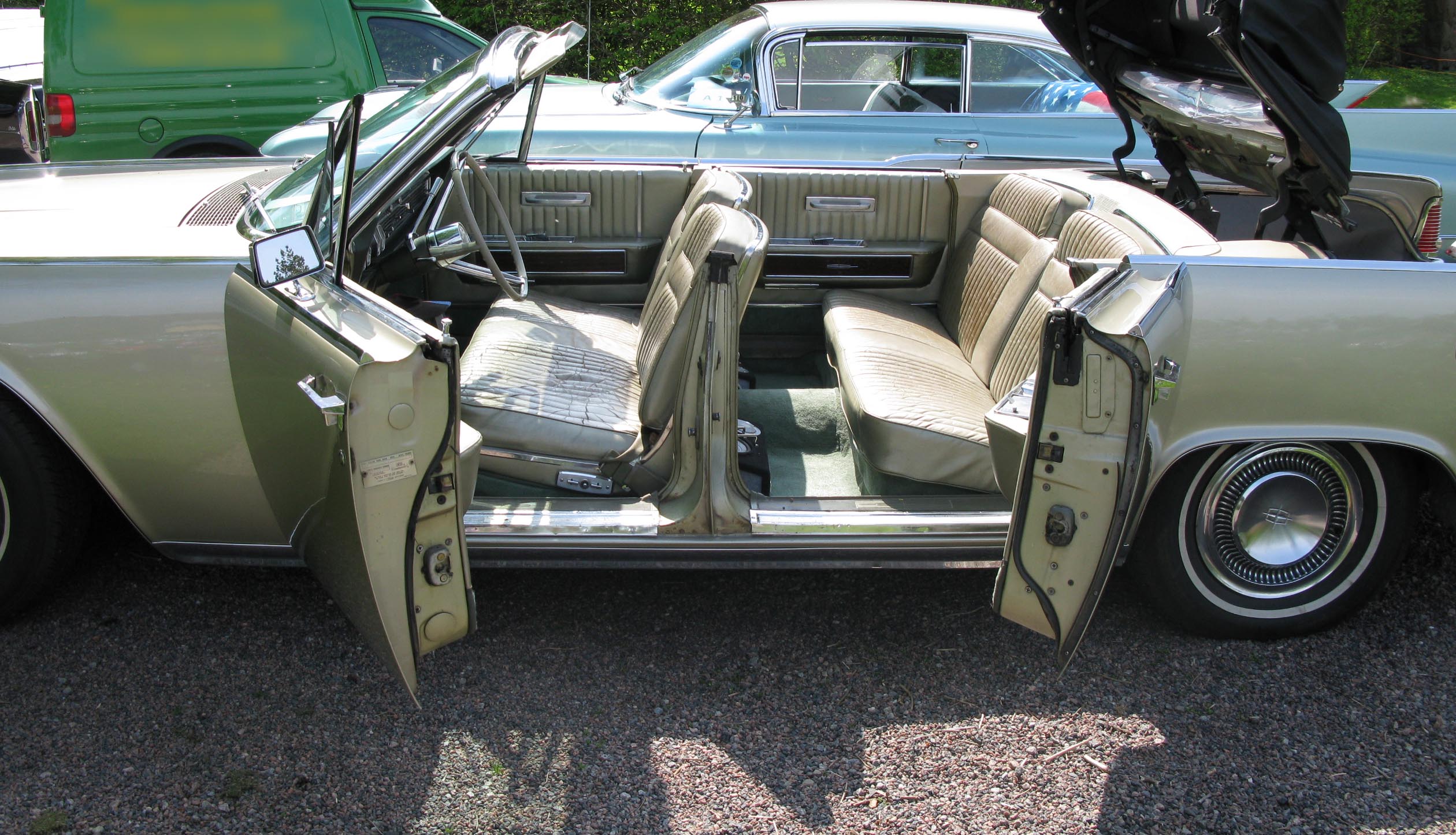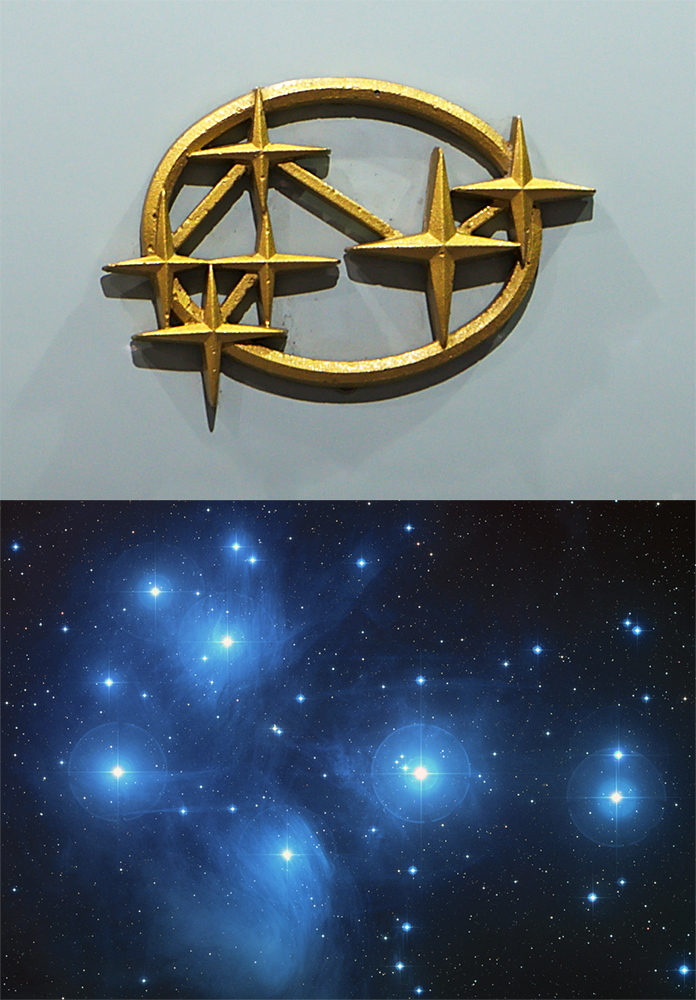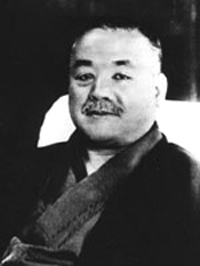|
Subaru 360
The Subaru 360 is a rear-engined, two-door city car manufactured and marketed from 1958 to 1971 by Subaru. As the company's first automobile, production reached 392,000 over its 12-year model run. Noted for its small overall size, 1,000 lb curb weight, monocoque construction, swing axle rear suspension, fiberglass roof panel, and rear-hinged doors, the inexpensive car was designed in response to the Japanese government's light car or Kei car regulations and its proposal for a larger "national car," both intended to help motorize the post WWII Japanese population. The 360's overall size and engine capacity complied with Japan's Kei car regulations. Nicknamed the "ladybug" in Japan, and ultimately superseded by R-2, the 360 was one of Japan's most popular cars and was available in a single generation in two-door, station wagon ("Custom"), "convertible" ( a sedan with a roll-back fabric roof) and sporting variants. The two-door sedans' model code is K111, while the wagon is k ... [...More Info...] [...Related Items...] OR: [Wikipedia] [Google] [Baidu] |
Suicide Door
A suicide door is an automobile door hinged at its rear rather than the front. Such doors were originally used on horse-drawn carriages, but are rarely found on modern vehicles, primarily because they are perceived as being less safe than a front-hinged door. Being rear-hinged, if the vehicle was moving and the door opened, the driver/passenger would have to lean forward and out of the vehicle to close it. As seat belts were not in common use at that time, the risk of falling out of the car and into traffic was high, hence the name "suicide door". Initially standard on many models, later they became popularized in the custom car trade. Automobile manufacturers call the doors coach doors (Rolls-Royce and Lincoln), flexdoors (Opel), freestyle doors (Mazda), rear access doors (Saturn), or simply describe them as rear-hinged doors. History Rear-hinged doors were common on cars manufactured in the first half of the 20th century, including the iconic Citroën Traction Avant. In the ... [...More Info...] [...Related Items...] OR: [Wikipedia] [Google] [Baidu] |
Suicide Doors
A suicide door is an automobile door hinged at its rear rather than the front. Such doors were originally used on horse-drawn carriages, but are rarely found on modern vehicles, primarily because they are perceived as being less safe than a front-hinged door. Being rear-hinged, if the vehicle was moving and the door opened, the driver/passenger would have to lean forward and out of the vehicle to close it. As seat belts were not in common use at that time, the risk of falling out of the car and into traffic was high, hence the name "suicide door". Initially standard on many models, later they became popularized in the custom car trade. Automobile manufacturers call the doors coach doors (Rolls-Royce and Lincoln), flexdoors (Opel), freestyle doors (Mazda), rear access doors (Saturn), or simply describe them as rear-hinged doors. History Rear-hinged doors were common on cars manufactured in the first half of the 20th century, including the iconic Citroën Traction Avant. In the e ... [...More Info...] [...Related Items...] OR: [Wikipedia] [Google] [Baidu] |
Subaru
( or ; ) is the automaker, automobile manufacturing division of Japanese transportation conglomerate (company), conglomerate Subaru Corporation (formerly known as Fuji Heavy Industries), the Automotive industry#By manufacturer, twenty-first largest automaker by production worldwide in 2017. Subaru cars are known for their use of a flat engine, boxer engine layout in most vehicles above 1,500 cc. The Symmetrical All Wheel Drive drive-train layout was introduced in 1972. Both became standard equipment for mid-size and smaller cars in most markets by 1996. The lone exception is the Subaru BRZ, BRZ, introduced in 2012 via a partnership with Toyota, which pairs the boxer engine with rear-wheel-drive. Subaru also offers turbocharged versions of their passenger cars, such as the Subaru WRX, WRX, Subaru Legacy, Legacy and Subaru Outback, Outback XT, Subaru Ascent, Ascent, and formerly the Subaru Legacy, Legacy GT and Subaru Forester, Forester XT. In Western markets, Subaru vehi ... [...More Info...] [...Related Items...] OR: [Wikipedia] [Google] [Baidu] |
Cabrio Coach
A cabrio coach or semi-convertible is a type of car that has a retractable textile roof, similar to a convertible/cabriolet. The difference is that where a convertible often has the B-pillar, C-pillar and other bodywork removed, the cabrio coach retains all bodywork to the top of the door frames and just replaces the roof skin and rear window with a retractable fabric panel. An advantage of the cabrio coach, particularly for unibody designs is that retaining more of the car's original structure means that structural rigidity is higher (or the vehicle weight is lower) than traditional cabriolets. If a vehicle's roof includes metal panels as well as the soft-top, it may be considered to be a canvas top design or a fixed-roof vehicle with a sunroof, instead of being a cabrio-coach. These have the advantage that they may be more easily retrofitted to an existing car; it was a factory option (although listed as a separate model) for the Volkswagen Beetle up to 1963. History This ... [...More Info...] [...Related Items...] OR: [Wikipedia] [Google] [Baidu] |
Speed Limits In Japan
Statutory speed limit in Japan defaults to for divided national expressways and for any other roads, unless otherwise posted. The highest speed limit in Japan is on some sections of Shin-Tōmei Expressway (E1A) and Tōhoku Expressway (E4). Urban two-way streets are usually zoned at or less. Summary Statutory maximum speed limits of applies on divided national expressways and on other roads. There are no separate urban or rural statutory limits. Urban and rural limits are set by zoning rather than statute. Statutory speed limits for heavy trucks with GVWR over , trailers and three-wheelers are restricted to on divided national expressways. Implementation of speed limits in Japan can be summarized as: * regulatory speed limits of on residential streets and are common for urban two-lane roads. * regulatory speed limit of or is common in rural areas due to rugged mountainous terrain. * regulatory speed limit cannot be set higher than for any streets with an at-grade ... [...More Info...] [...Related Items...] OR: [Wikipedia] [Google] [Baidu] |
Carbureted
A carburetor (also spelled carburettor) is a device used by an internal combustion engine to control and mix air and fuel entering the engine. The primary method of adding fuel to the intake air is through the venturi tube in the main metering circuit, however various other components are also used to provide extra fuel or air in specific circumstances. Since the 1990s, carburetors have been largely replaced by fuel injection for cars and trucks, however carburetors are still used by some small engines (e.g. lawnmowers, generators and concrete mixers) and motorcycles. Diesel engines have always used fuel injection instead of carburetors. Etymology The name "carburetor" is derived from the verb ''carburet'', which means "to combine with carbon," or in particular, "to enrich a gas by combining it with carbon or hydrocarbons." Thus a carburetor mixes intake air with hydrocarbon-based fuel, such as petrol or autogas (LPG). The name is spelled "carburetor" in American English a ... [...More Info...] [...Related Items...] OR: [Wikipedia] [Google] [Baidu] |
Consumer Reports
Consumer Reports (CR), formerly Consumers Union (CU), is an American nonprofit consumer organization dedicated to independent product testing, investigative journalism, consumer-oriented research, public education, and consumer advocacy. Founded in 1936, CR was created to serve as a source of information that consumers could use to help assess the safety and performance of products. Since that time, CR has continued its testing and analysis of products and services, and attempted to advocate for the consumer in legislative and rule-making areas. Among the reforms in which CR played a role were the advent of seat belt laws, exposure of the dangers of cigarettes, and more recently, the enhancement of consumer finance protection and the increase of consumer access to quality health care. The organization has also expanded its reach to a suite of digital platforms. Consumer Reports Advocacy frequently supports left-wing environmental causes, including heightened regulations on auto ... [...More Info...] [...Related Items...] OR: [Wikipedia] [Google] [Baidu] |
Fuji Heavy Industries
is a Japanese multinational corporation and conglomerate primarily involved in both terrestrial and aerospace transportation manufacturing. It is best known for its line of Subaru automobiles. Founded in 1953, the company was formerly named (FHI) until 2017. The company's aerospace division is a defense contractor to the Japanese government, manufacturing Boeing and Lockheed Martin helicopters and airplanes under license. This same division is a global development and manufacturing partner to both companies. History Fuji Heavy Industries traces its roots to the Nakajima Aircraft Company, a leading supplier of airplanes to the Japanese government during World War II. At the end of World War II, Nakajima was broken up by the Occupation of Japan, Allied Occupation government under ''keiretsu'' legislation, and by 1950 part of the separated operation was already known as Fuji Heavy Industries. FHI was incorporated on July 15, 1953, when five Japanese companies, known as Fuji Kog ... [...More Info...] [...Related Items...] OR: [Wikipedia] [Google] [Baidu] |
Nakajima Aircraft Company
The was a prominent Japanese aircraft manufacturer and aviation engine manufacturer throughout World War II. It continues as the car and aircraft manufacturer Subaru. History The Nakajima Aircraft company was Japan's first aircraft manufacturer, and was founded in 1918 by Chikuhei Nakajima, a naval engineer, and Seibei Kawanishi, a textile manufacturer, as . In 1919, the two founders split and Nakajima bought out Nihon Aircraft's factory with tacit help from the Imperial Japanese Army. The company was renamed Nakajima Aircraft Company in 1919. The company's manufacturing facilities consisted of the following: * Tokyo plant * Musashino plant * Donryu plant * Ota plant, near Ōta Station. Visited by Emperor Shōwa on November 16, 1934. Critically damaged by American bombardment on February 10, 1945. Currently a Subaru Corporation plant for kei trucks. * Koizumi plant, near Nishi-Koizumi station. Critically damaged by American bombardment on April 3, 1945. Currently a Sanyo pla ... [...More Info...] [...Related Items...] OR: [Wikipedia] [Google] [Baidu] |
Fiberglass
Fiberglass (American English) or fibreglass (Commonwealth English) is a common type of fiber-reinforced plastic using glass fiber. The fibers may be randomly arranged, flattened into a sheet called a chopped strand mat, or woven into glass cloth. The plastic matrix may be a thermoset polymer matrix—most often based on thermosetting polymers such as epoxy, polyester resin, or vinyl ester resin—or a thermoplastic. Cheaper and more flexible than carbon fiber, it is stronger than many metals by weight, non- magnetic, non-conductive, transparent to electromagnetic radiation, can be molded into complex shapes, and is chemically inert under many circumstances. Applications include aircraft, boats, automobiles, bath tubs and enclosures, swimming pools, hot tubs, septic tanks, water tanks, roofing, pipes, cladding, orthopedic casts, surfboards, and external door skins. Other common names for fiberglass are glass-reinforced plastic (GRP), glass-fiber reinforced plastic (GFRP) or GF ... [...More Info...] [...Related Items...] OR: [Wikipedia] [Google] [Baidu] |
Volkswagen Beetle
The Volkswagen Beetle—officially the Volkswagen Type 1, informally in German (meaning "beetle"), in parts of the English-speaking world the Bug, and known by many other nicknames in other languages—is a two-door, rear-engine economy car, intended for five occupants (later, Beetles were restricted to four people in some countries), that was manufactured and marketed by German automaker Volkswagen (VW) from 1938 until 2003. The need for a ''people's car'' ( in German), its concept and its functional objectives were formulated by the leader of Nazi Germany, Adolf Hitler, who wanted a cheap, simple car to be mass-produced for his country's new road network (Reichsautobahn). Members of the National Socialist party, with an additional dues surcharge, were promised the first production, but the Spanish Civil War shifted most production resources to military vehicles to support the Nationalists under Francisco Franco. Lead engineer Ferdinand Porsche and his team took until 1938 ... [...More Info...] [...Related Items...] OR: [Wikipedia] [Google] [Baidu] |








